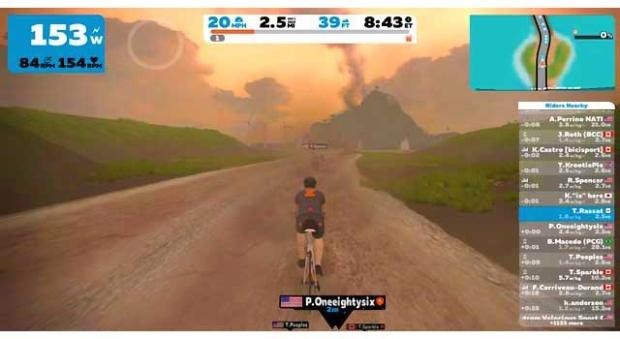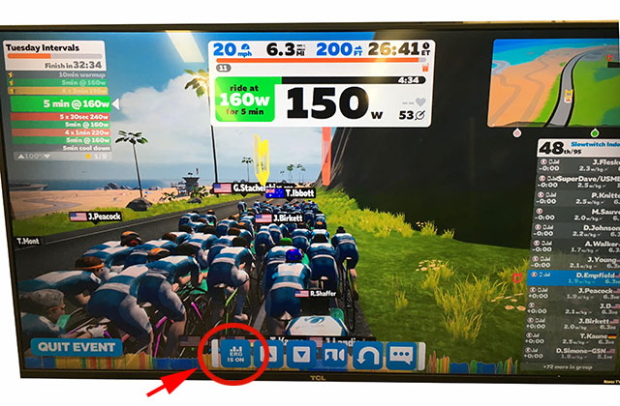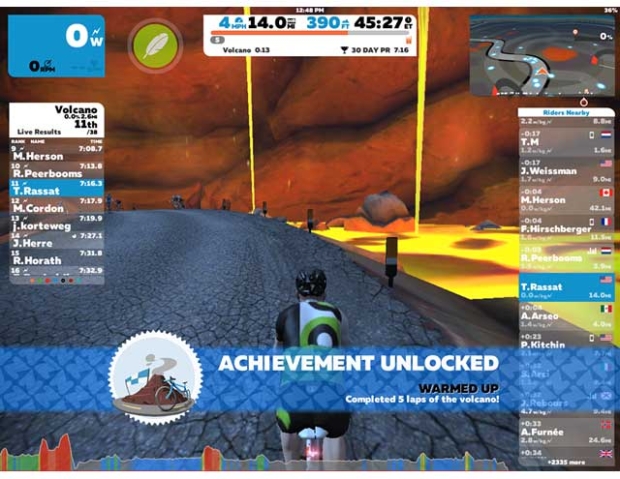It’s Hot, Sunny, Great Riding Outdoors. Translation: How Do I Zwift?
Late to the Zwift Party? No matter. Let’s get you up to speed right now. We've published a lot of how-tos on Zwift, Rouvy, The Sufferfest, TrainerRoad. Some of these tools can be integrated into “Community experiences” and these are important to my own strategy here on Slowtwitch (I’ll get to that further below).
Today, I’m going to recast our primers on Zwift, because I get the sense that a number of you are interested in joining but you’re sort of lost on where to start.
Understandable! Zwift is like Dungeons & Dragons: Its functions, moving parts, hidden rooms and lonely paths are so numerous, and are added at such a rate, I question whether most joining today would ever fully know the place. It’s like an amusement park that adds rides faster than you can ride them all. Which I like! Because I’m easily bored.

But joining today is no more complicated than it was 2 or 3 years ago. In fact, less so. Less complicated and less costly. But first, why do I care? Fair question, and when I’m done with the task at hand I’ll be uncommonly transparent about my motives. Now, for those who’re new to Zwifting…
You need 4 things to Zwift: A reasonable internet connection (most folks have that); a stationary bike trainer; a way to transmit a “performance” signal to your device on which Zwift (the Game) is loaded; and then you need that hardware, whatever it is. The hardware is a computer of some sort (even if just a handheld phone); and then a viewer, again even just a phone.
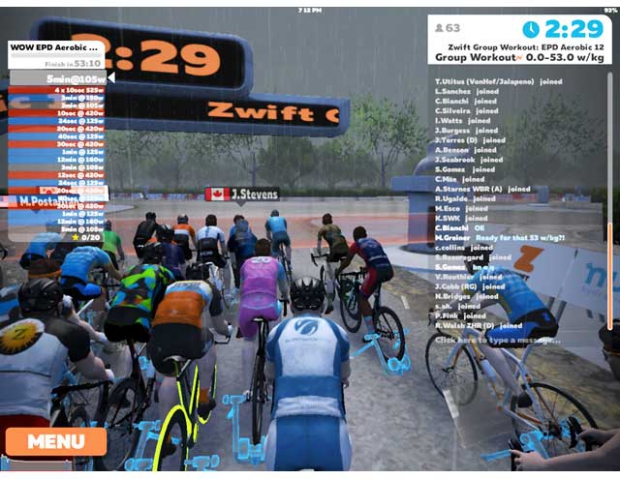
By far, in my experience, the easiest, cheapest, slickest way to Zwift is by using an AppleTV as your “computer”. An AppleTV isn't a TV. It's a little black box.
You can use your iPhone or Android phone instead, an iOS or Android tablet, or a laptop or desktop computer. I’ve used pretty much all forms of Zwifting. The AppleTV is the slickest and cheapest, and the phone or tablet is least desirable because it's handy to use your handheld device to work as a “remote control” when you’re in The Game (as Zwift calls it). There’s a Companion App for Zwift, which you don’t exactly need, but it makes life easier (if you want to text message in The Game, or switch back and forth between modes, and so forth).
When I lead Zwift workouts, I use 2 computers – the AppleTV has the program, the Game – and then my iPhone I use as my remote control. But really I use 3 computers if truth be told. The first is my desktop, which is where I write my Zwift workouts that you join in on (I don’t need to have Zwift loaded onto my desktop for this).
On my iPhone I have the Zwift Companion app (from the AppStore), which I use for messaging in The Game (always voice-to-text). And then there's my 4k AppleTV and I have 2 of these: 1 for Zwift ride; 1 for Zwift run. You could do this with 1 AppleTV, but I have a big screen in front of both my treadmill and my bike trainer, and I have an HDMI cable running from my AppleTV to my big screen, and it’s just easier to have 2x AppleTVs. They’re $179 each, and I’m just barely extravagant enough to have purchased 2 of these.
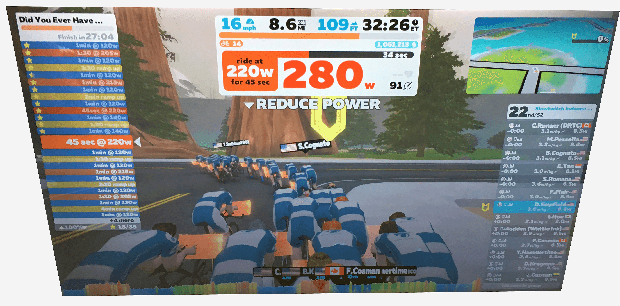
My big screens? They’re just repurposed TVs. Anything in my home that’s been replaced. Anything that accepts an HDMI or other video cable. However, I did splurge on one new 43” TV and it set me back almost $300. So, the entire hardware buy, for a first class (wo)mancave setup, computer and screen, with a new HDMI cord, is about $500, maybe $600 if you need to mount the TV on a fancy swivel wall mount.
And that monitor wall mount, that’s what I did for the man-run-cave. But not the man-bike-cave. If you’re riding in aero, which I do, on my trainer, do not mount your TV like you’re mount your computer screen: at horizontal eye level. My screen is near the ground, but tilted so that I can look straight at it. When in aero my eyes are looking at a point on the ground, say, 10 or 15 feet in front of me. Set up thusly, I never need to look straight down. If you fish through a photographer’s raw stock of race pics of pros, in half of those pics the pros are looking straight down. You don’t see these pics in magazines much because that’s not a great image to publish. If you want to look at the screen the entire time when you’re Zwifting in aero, you’ll need to strategize the screen placement.
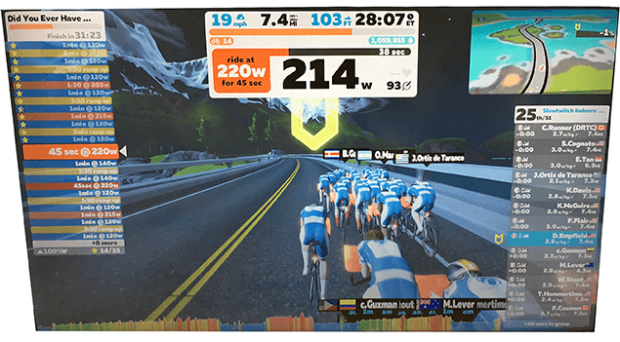
The only problems with the AppleTV as the “computer” hosting The Game is: You’ll need to remember your Apple ID; then you’ll need to type in the passwords and IDs using a cumbersome arrow navigation across and around a virtual keyboard. Clumsy but not technically difficult.
That leaves us with the trainer, and the method to move performance data wirelessly to that AppleTV. If you purchase a smart trainer, you’re buying everything: the trainer you pedal, the device that measures your power output and that intakes a signal from The Game ordering your training to apply a particular resistance to the trainer; and the means by wirelessly sending and receiving that signal. My advice: Ignore the stated retail price of these trainers. They’re becoming somewhat commoditized. Yes, some are better than others. But a fair number of direct drive smart trainers will do the job, enough so that there’s fierce price competition among them. Add to that we’re in between model years for a lot of these brands, the old need to get moved out. If you’re spending more than $800 or $900 on one of these it’s likely you’re overspending, and the prudent shopper can find a good one for $700 and change or perhaps even less, between now and September.

So, to recap, to be styled, and I mean everything top cabin, assuming you already have an iPhone or Android phone, or one or the other tablet: Smart direct drive trainer: About $800. AppleTV 4k: $179. 40-something inch TV: $300. HDMI cable to connect the AppleTV to your big screen: $40 or so. Done! So, if you have nothing other than a bike and an iPhone, I don't know why you'd want to spend more than about $1,200 all-in, on everything, even if you were hell-bent on spending as much as you could (unless you want to talk Kickr + Kickr Climb, but let's leave that discussion for some other time).
Oh, and Zwift. $15/mo after your free trial.
If being styled ain't your thing, and you want to purpose your wind, fluid or mag wheel-on trainer also fine, in which case you need a Speed & Cadence Sensor, which’ll set you back about $60. Your power is emulated, that is, this device makes a guess at your power that’ll work well enough to get you going. The only thing: What we call ERG mode won’t be available to you. ERG mode is a way for The Game to control your trainer, sending a signal to your trainer that you need to pedal at, say, 80 percent of your FTP to keep the pedals turning. This is what we use in “structured training”, which is our version of, basically, a sort of spin class we do (I lead one every Tuesday afternoon, 4pm PST). You’re familiar with ERG mode if you’re already using TrainerRoad, Golden Cheetah, The Sufferfest and the like. Instead of your trainer basically on auto-pilot, you’ve got to change your bike’s gears and maintain the power called for if you use a Speed & Cadence sensor on a dumb trainer.
We have a 6-part series on how-to-Zwift using a Speed & Cadence Sensor. In fact, it’s a good how-to-Zwift primer if you are using a smart trainer too.
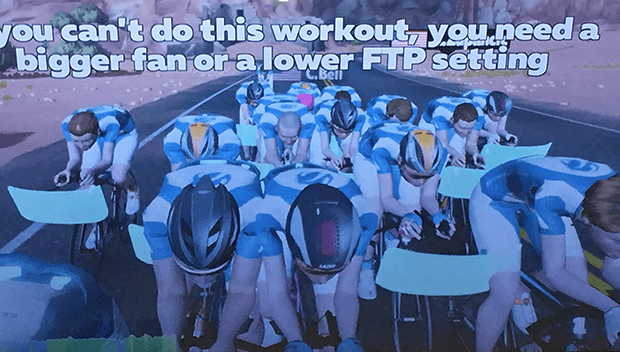
So, not styled, assuming you're using something newer than a flip phone, and if you have any sort of trainer in your garage, set up cost: $60.
The one thing that does get people twisted up is if, when you’re setting up your Profile, you place an incorrect FTP in the text box asking for it. What’s FTP? Roughly the max power you can hold on the bike for one hour. When you ride on Zwift, group rides, races, and the like, if Zwift sees that you’re overperforming your programmed-in power Zwift will “help” you by increasing your FTP to what it thinks it should be. When you join our Tuesday Structured Training workout – which is a no-drop workout; if you keep the pedals turning you’ll remain with the group – I’ll tell you, upfront, at the beginning of every workout, how hard you’re going to work. Maybe it’s a tongue dragger. Or it’s moderately hard. Whatever. And if your tongue is not dragging 55 minutes into that 1hr tongue dragger, your FTP is set too low. If you physically cannot pedal the bike during the workout, you’ve set your FTP too high.
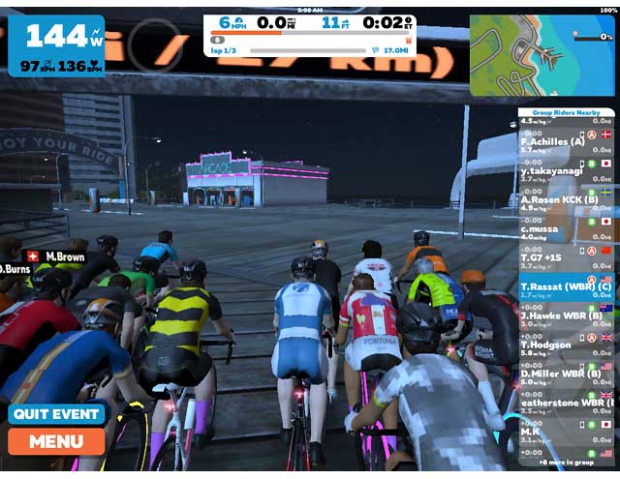
You can drop out of ERG mode – and ERG mode is the best way to ride structured training sessions in Zwift, if you have a smart trainer – at any time during one of these workouts. You can do that either in The Game, or you can do so in the Companion App. If I just confused the hell out of you, here’s a little more detail on ERG mode and how to wrangle it. (It’s very easy.) So, if you’re in the middle of a workout and you just… can’t… pedal! Drop out of ERG for a spell, then drop back in. As long as you pedal, you’ll remain with the group, part of the workout. Then, after the workout is over, lower your FTP by 5 or 10 watts in your profile.
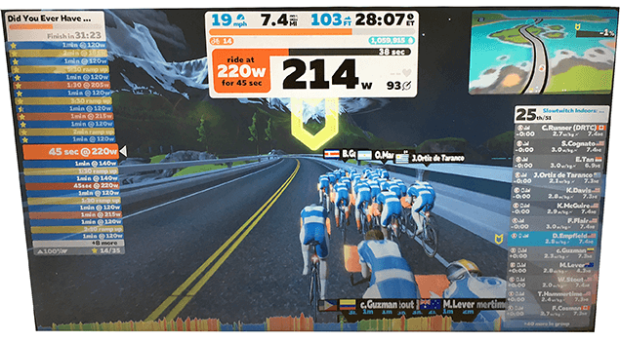
Now, what I wrote in the beginning was that I was going to give you the larger picture – tell you why I even care about Zwift, or Rouvy, or The Sufferfest, or TR, or any similar platform. It’s because the right platform, used the right way, is a community tool for Slowtwitchers and for Slowtwitch partners, including race directors, clubs, coaches. For most of Slowtwitch’s 20 years my goal wasn’t just to host a virtual community; but to use virtualness to enhance our actualness. Example:
Are you racing the Ironman 70.3 World Championships in Nice? Do you want to know what that course rides like? Looks like? Uphills, turns, downhills, how hard is it, what gearing works? It would be possible, at least in theory, for Slowtwitch to schedule a group ride, on that bike course, in Rouvy. You could pre-ride any course in Rouvy and because it’s “multiplayer” we could leverage our community and place a group ride on the schedule. If that sounds confusing, it isn’t. It is literally as simple as my saying, “Go here,” and you click my provided link, you “join” a ride and as long as you’re there at that time on that day a bunch of us are going to ride together on that course; Rouvy will make you pedal about as hard as you should pedal in real life on that course; and we’ll all get a sense, together, for whether our individual bikes are correctly geared and so on. That’s Rouvy. Very helpful!
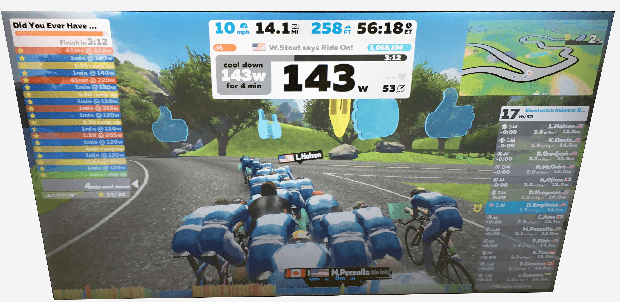
In the case of Zwift, many of us “meet” a couple of days a week. If I think several moves ahead, Zwift is not for me an end; it’s a means to a different end. I’m asked a lot by race organizers to help them integrate their registrants into processes to help them prepare. Yes, we also maintain lists of local clubs and coaches, bike retailers and the like. Just, for those (including newbies) who want at least 1 or 2 sessions per week where they know they’ll get themselves prepared for the task, we can use Zwift as a tool that provides that. We’ll do that both on the West Coast, upcoming, for those racing the Nautica Malibu Triathlon, and on the East Coast (putting that one together now!)
If you’re naïve to Zwifting and you want to ask further questions, there’s an evergreen discussion on our Reader Forum where you’ll find help and answers. Here you go if you’d like to sign up for Zwift, and there’s a free trial period if you just want to kick the tires.


